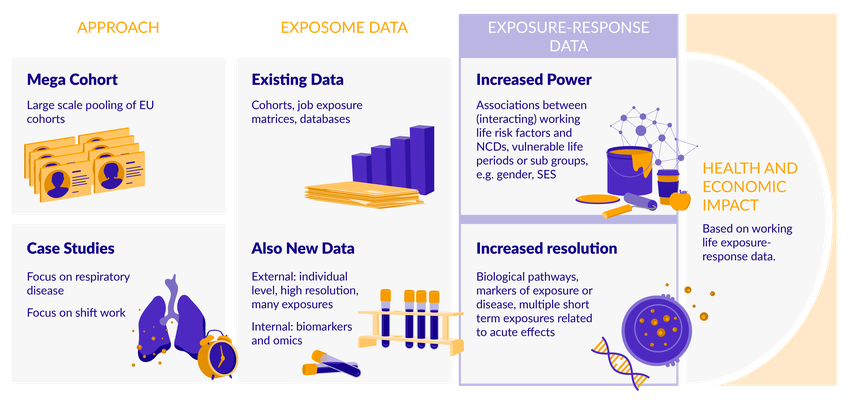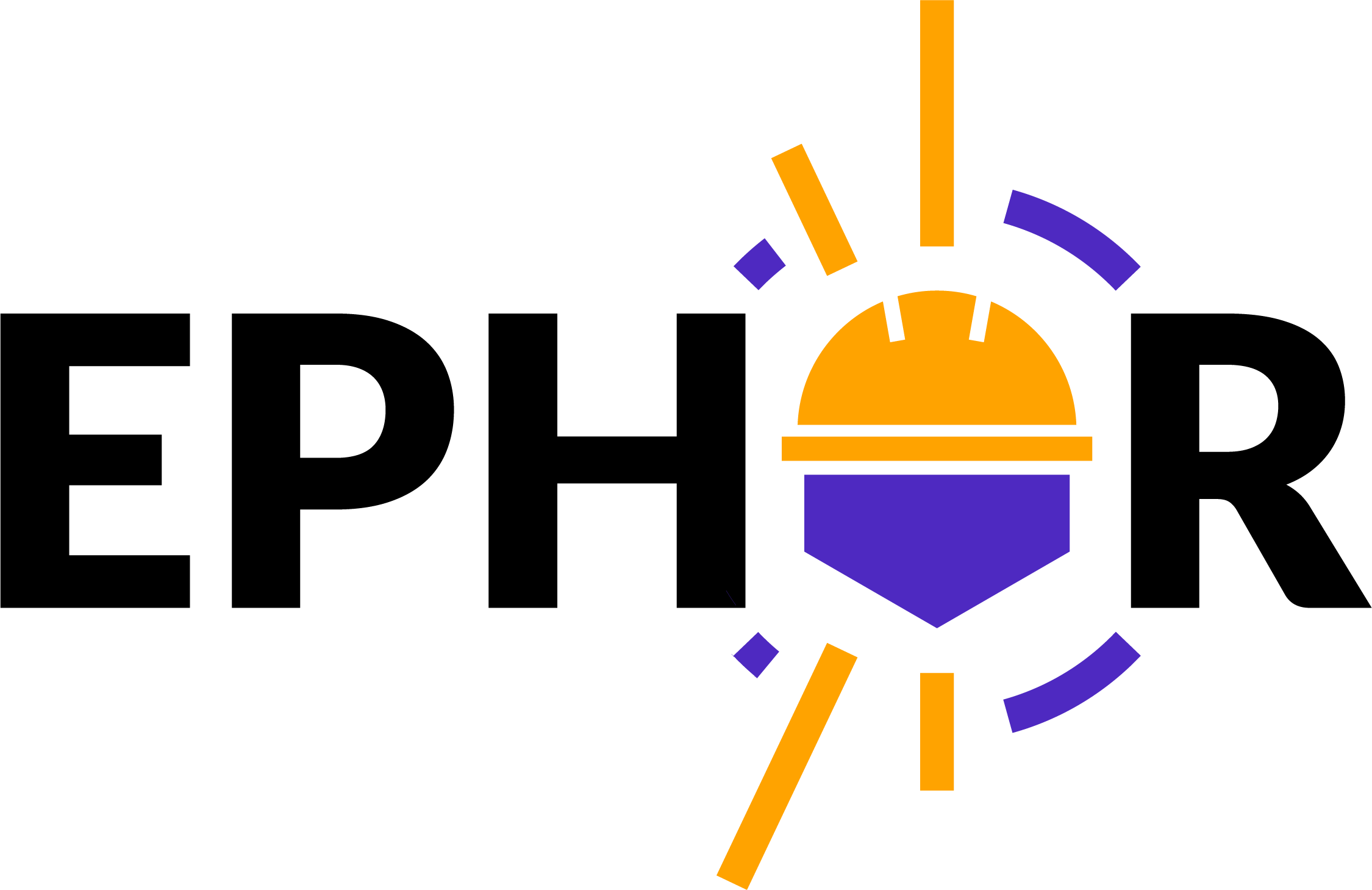About EPHOR
EPHOR developed methods and tools to better characterise the working-life exposome. This was achieved by combining two unique elements. The first is an international large-scale pooling of existing cohort data to create the EPHOR mega cohort. The second is the collection of new, individual-level high-resolution data in case studies on both external and internal exposures as well as biological mechanisms. Through these elements, more detailed and complete knowledge on the working-life exposome was obtained.
Why focus on the working life?
Working life exposures can lead to many diseases. The total burden of disease caused by occupational exposure is ~6%, similar to the burden from urban air pollution or obesity. Associated economic costs of NCDs caused by working life related exposures vary between 2-6% of a country’s GDP in the EU.
Therefore, ensuring a safe and healthy work environment is a strategic goal for the European Commission. Current risk reduction policies and strategies are informed by the existing scientific evidence and estimates of the burden of occupational NCDs.
However, knowledge is lacking on: effects of multiple working life related exposures in relation to possible multiple disease outcomes; the effects of unknown exposures; vulnerable life stages and subpopulations of individuals that are more susceptible; the causality between working life exposure and health effects via biological pathways. Basically, characterising the working-life exposome is in its infancy.
What is the working life exposome?
The exposome, being all relevant exposures throughout life, is a promising concept for elucidating the complex relationships between environment, health and disease.
EPHOR defined the working-life exposome as all occupational and related non-occupational exposures throughout life.
A working-life exposome approach allows to address current limitations and challenges by providing better insights into the relationships between multiple working life related exposures and health, in particular for vulnerable life stages and groups (insecure job workers, female workers).
This approach will shift the study from one occupational exposure in relation to one defined health effect, to mapping the complexity of interrelated working life exposures throughout the life time in relation to biological changes inside the body and health effects.

Main achievement
The EPHOR project developed a working life exposome toolbox that can be used for evidence-based and cost-effective prevention by scientists, occupational health practitioners, and policy makers. It contains:
- Improved knowledge on how multiple exposures within the working-life exposome are related to the occurrence of common diseases, including complex interactions of exposures, biological pathways and early signs of health damages, and vulnerability at different life-stages
- Innovative methods for collection, storage, and interpretation of working-life exposome data, including its economic and societal impact:
- Tools for scientists to expand the current knowledge base on the exposome in relation to health;
- Tools for policy makers and occupational health practitioners to obtain data and information for developing evidence-based and cost-effective preventive actions and policies.
Approach
To develop the working life exposome and toolbox EPHOR two different study approaches were combined:
The EPHOR mega cohort was constructed from multiple population-, industry- or occupational cohort studies available in the EU. This is essential to achieve sample sizes that are sufficient to:
- Move away from single exposure, single disease evaluations to the agnostic identification and exploration of (combinations of) risk factors in relation to multiple diseases.
- Identify vulnerable life stages (young adults, reproductive stage, elderly) and population subgroups (gender, socio-economic groups) in which these risk factors result in specific health effects.
Dedicated case studies collected high-resolution external and internal exposure and mechanistic data at the individual level to study :
- Early markers of disease and disease mechanisms
- individual time-resolved, high resolution exposure-response relations
The case studies will consider working-life exposures in relation to respiratory health (disease angle) and shift work exposures in relation to health (exposure angle).
New methods and models were developed for the collection, storage and analyses of working life exposome data and translation of these into actionable insights and improved assessment of economic impact and health risks.

Expected impact
This will be achieved by enabling:
Scientists: Improved usage and enhancement of data, methods, and models in exposome research to rapidly increase the knowledge base on the working-life exposome
Occupational health practitioners: Improved evidence-based and cost-effective preventive practices and guidelines
Policy makers: Improved evidence-based and cost-effective preventive policies
EU industries: to create opportunities for innovation by EU industries by developing e.g. sensors, non-invasive biomarkers tests and apps
